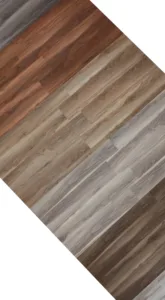Carpets are a favored flooring option for their comfort and aesthetic allure, yet the nagging concern of stains persists among homeowners. Whether it’s a spilled beverage, a pet mishap, or muddy footprints, the potential for stains can be a constant source of worry. In this extensive guide, we will unravel the intricate world of carpets, exploring various types and pinpointing those least likely to succumb to unsightly stains.
Understanding Carpet Fiber Types:
The choice of carpet fiber is pivotal in determining its resistance to stains. Different fibers boast unique characteristics, and some inherently offer superior stain resistance.
Nylon, a robust and resilient fiber, gains popularity for its durability. When treated with stain-resistant coatings like Scotchgard, nylon carpets become highly resistant to spills and stains. Polyester, lauded for its luxurious feel and vibrant colors, is generally more stain-resistant than natural fibers, especially when subjected to modern stain-resistant treatments. Olefin, or polypropylene, stands out for its natural resistance to moisture and stains, making it a preferred choice for high-traffic areas and outdoor spaces. Wool, a natural fiber renowned for its luxurious texture, possesses some intrinsic resistance to stains due to its natural oils, although additional treatments may be required to enhance resilience.
Stain-Resistant Technologies:
Advancements in carpet manufacturing have birthed technologies aimed at fortifying stain resistance, giving consumers an array of options to consider.
Scotchgard and Stainmaster are household names in the realm of stain-resistant treatments. Applied primarily to nylon and polyester carpets, these treatments create protective barriers on the fibers, making cleaning easier and resistance to stains heightened. Solution-dyed fibers, where color is infused during manufacturing, yield carpets with outstanding resistance to fading and stains. Nanotechnology takes stain resistance to microscopic levels, manipulating materials at atomic levels to form a protective barrier against liquids.
Carpet Styles and Pile:
Beyond fibers and technologies, carpet style and pile contribute significantly to a carpet’s ability to resist or camouflage stains.
Cut pile carpets, such as plush and Saxony, offer a dense and even surface, providing a luxurious feel. While they may show footprints and vacuum marks more easily, the denseness contributes to better stain resistance. Loop pile carpets, exemplified by Berber, feature uncut loops of yarn, creating a textured surface that is harder for spills to penetrate. Carpets with a combination of cut and loop pile, known as patterned carpets, strike a balance, with the pattern helping to mask stains between cleanings.
Maintenance and Cleaning Tips:
Choosing a stain-resistant carpet is a proactive step, but proper maintenance and cleaning practices are equally critical for preserving the carpet’s pristine appearance.
Immediate action is key when spills occur. Blotting with a clean, absorbent cloth prevents stains from setting in; however, avoid rubbing, as it can spread the stain. Regular vacuuming removes dirt and debris, contributing to stain prevention. Opt for a vacuum cleaner with adjustable height settings for effective cleaning without damaging the fibers. Professional carpet cleaning, scheduled at least annually, ensures the removal of deep-seated dirt and stains, enhancing the carpet’s appearance and longevity. Always adhere to the manufacturer’s guidelines for cleaning and maintenance to avoid voiding the warranty.
Conclusion:
In the quest for a carpet least likely to showcase stains, factors such as fiber type, stain-resistant technologies, carpet style, and maintenance practices play pivotal roles. From Scotchgard-treated nylon carpets to solution-dyed Olefin options and loop pile Berber carpets, choices abound for the stain-conscious consumer. The dynamic landscape of nanotechnology and innovative manufacturing processes continues to push the boundaries of stain-resistant carpeting.
Ultimately, the ideal stain-resistant carpet for your home hinges on your specific needs, lifestyle, and preferences. Armed with an understanding of different carpet fibers and abreast of the latest technologies, you can make an informed decision that seamlessly blends aesthetic appeal with practicality in your flooring choice.
Read next: Carpet Fiber Consumption in American Homes



